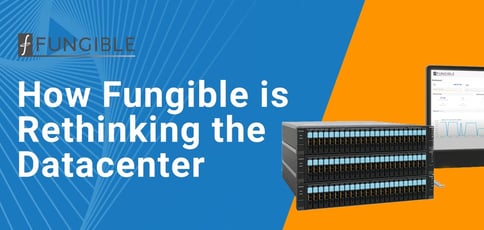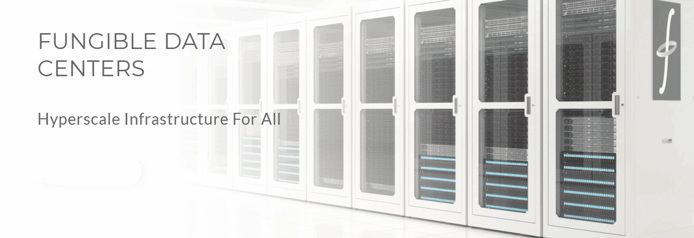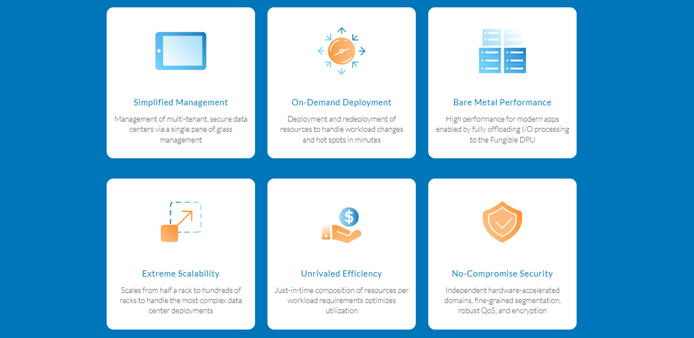
TL; DR: Founded in 2015 by a team of tech industry veterans, Fungible is trying to revolutionize the datacenter. The company posits that the current datacenter model has reached a tipping point in which too many silos are causing significant stranded capacity. Fungible’s Data Processing Unit (DPU) is a new microprocessor that serves a role supporting CPUs and GPUs so that datacenters can be reformatted, scaled, and composed to best serve customer needs.
Pradeep Sindhu and Bertrand Serlet together have experience with and ties to several of the companies that essentially invented the computer age as we know it: Xerox PARC, Sun Microsystems, Juniper Networks, NeXT, and Apple.
Now Sindhu and Serlet have co-founded Fungible, a company dedicated to revolutionizing and improving the very fabric of datacenters.
“With the amazing growth of data, our thesis is we’ve reached a tipping point,” said Toby Owen, VP of Product at Fungible. “Data is hard and expensive to move. Can we optimize for data-centric operations rather than compute-centric operations? That’s our founding thesis.”

The company’s target market is service providers, but its suite of products could help any number of industries or users that have large data sets that need to be processed quickly. Fungible has already garnered hundreds of millions of dollars from high profile venture capital investors, including SoftBank Investment Advisors. And the company has a deep bench of engineering talent with scores of patents under their belt.
Toby told us that Fungible has all the pieces in place: talent, funding, and essentially a brand new product in its Data Processing Unit (DPU).
The Tipping Point: Why Rethink the Datacenter?
Toby said there are some big market challenges that Fungible is trying to address. One of those market challenges includes needing an increasingly large number of different servers to address a variety of workloads.
“We’ve got all these servers, with resources underutilized,” he said.
According to Toby, data has grown to become so complex, that it is becoming harder to manage. Part of the reason is that each component now tends to stay in its own silo.
“Those silos lead to stranded capacity, and the more silos you have, the more stranded capacity you have,” Toby said. “It is a utilization problem at the hardware level.”
He noted that having all these silos that are designed for a single purpose, whether it’s storage or networking, leads to degraded performance, so you don’t have an end-to-end optimized stack.
Toby said the team at Fungible sees this as an unsustainable way forward. As a result, Fungible is proposing a new frontier.
Breaking Down Silos and Rescuing Stranded Capacity
Innovators are known for questioning preconceived notions. That’s exactly what Fungible is doing.
The aim is to disaggregate server infrastructure into customizable pools. And Fungible’s model is creating the ability to compose the structure according to whatever you need depending on the task at hand.
As an example, a pool could consist of compute, storage, network, and specialty compute.
“It can be built to spec for what you’re doing,” Toby said. “It might be high storage, low compute. It might be customized for machine learning. This is our vision for the future of the datacenter. Composable blocks optimized for data-centric workloads.”

It comes down to disaggregation and composability with cloud-like flexibility. Toby said the idea that now storage can be disaggregated from the server gives you the ability to customize on a per-volume basis.
In Fungible’s datacenter product, it has a storage cluster that Toby told us is the key to the whole thing working.
“You can now compose a server from whatever isn’t utilized,” he said.
If you had to build a server to be your indexer, it’s sitting there idle 95% of the time, Toby said, but this allows you to use it.
In simplest terms, what Fungible is doing comes down to resource allocation.
The DPU: Fast, Formidable, Flexible
One of the keys to what Fungible is doing to revolutionize server functions and datacenter architecture is an entirely new product: The Data Processing Unit, or DPU.
“We like to say we’re the third socket for the datacenter,” Toby said. “You’ve got CPUs, specialized processors like GPUs, and now you have the Data Processing Unit.”
If there are traditional workloads that fit on a server, the DPU doesn’t have to disrupt that, according to Toby. But as workloads grow bigger and more modern, they become more data-centric.
*Video: CEO Pradeep Sindhu on the Fungible DPU.
“We built the hardware, and that took a long time. It takes a long time to solve this,” he said. “We’ve built this chip that is optimized for data workloads. It’s got its own operating system that’s programmable.”
Toby noted that, with the DPU, there are capabilities programmed into the chip that the company hasn’t even used yet. The opportunities for the new “third socket” to revolutionize the industry are huge.
Scaling For the Future
After several years of building and hard work, Toby told us the company is just beginning its more public-facing phase.
“Fungible Datacenters are doing multiple proofs of concept right now,” Toby said. “And there are potential uses in the market for (the DPU). Our vision is to make this technology prevalent, because we think it solves problems that need to be solved. There’s a tremendous value not just in cost savings but in unlocking workloads that may be stuck right now.”
One important part of what the company is doing relates to security.
Toby said a datacenter provider may not know what its customers are running, and may run a multi-tenant operation that could have hundreds or potentially thousands of customers. Fungible’s solutions can still work for them because it has made sure security is built into the model.
“There’s a concept within a Fungible Datacenter called a realm,” he said. “If people want to bring their own authentication process, or different requirements, we can carve (the datacenter) out into different realms so customers can do this and not affect the entire rack.”
This is where networking becomes critical, since it can be partitioned and allow customers not to have to change IP schemes.
But there are possibilities beyond service providers, Toby said. The company is looking at enterprise uses as well, and knows that machine learning and artificial intelligence uses could benefit.
According to Toby, Fungible and its team of engineers believe strongly in the applicability of what they’ve built. It includes the scalability, security, ease of management, and ease of deployment that could bring about enormous changes in the IT world at large.
“This is a whole new tier of product,” Toby said.
HostingAdvice.com is a free online resource that offers valuable content and comparison services to users. To keep this resource 100% free, we receive compensation from many of the offers listed on the site. Along with key review factors, this compensation may impact how and where products appear across the site (including, for example, the order in which they appear). HostingAdvice.com does not include the entire universe of available offers. Editorial opinions expressed on the site are strictly our own and are not provided, endorsed, or approved by advertisers.
Our site is committed to publishing independent, accurate content guided by strict editorial guidelines. Before articles and reviews are published on our site, they undergo a thorough review process performed by a team of independent editors and subject-matter experts to ensure the content’s accuracy, timeliness, and impartiality. Our editorial team is separate and independent of our site’s advertisers, and the opinions they express on our site are their own. To read more about our team members and their editorial backgrounds, please visit our site’s About page.

